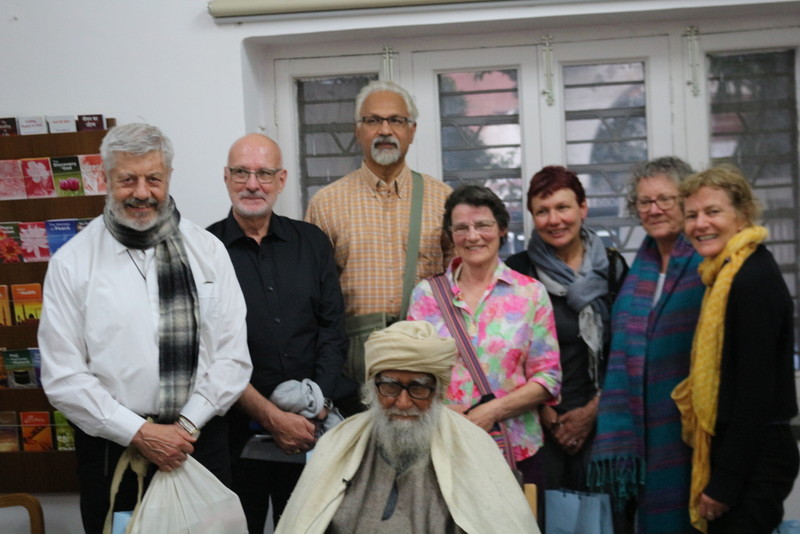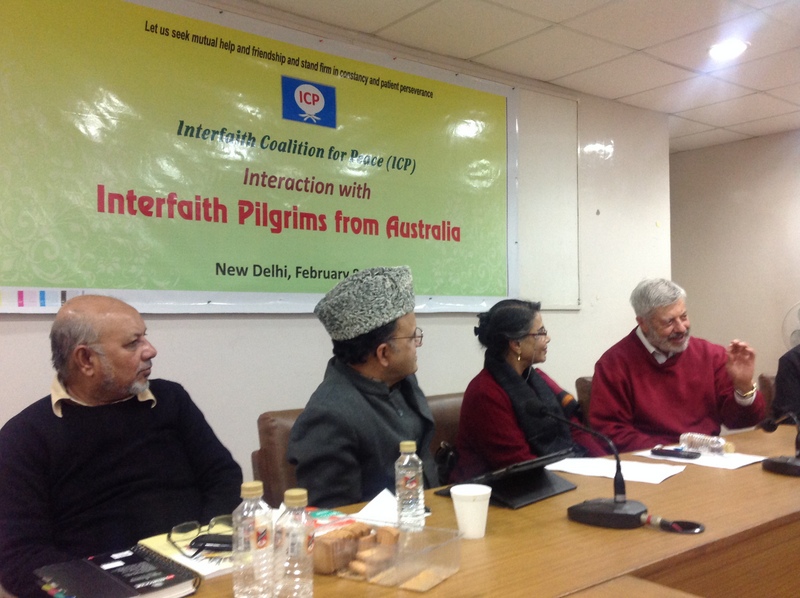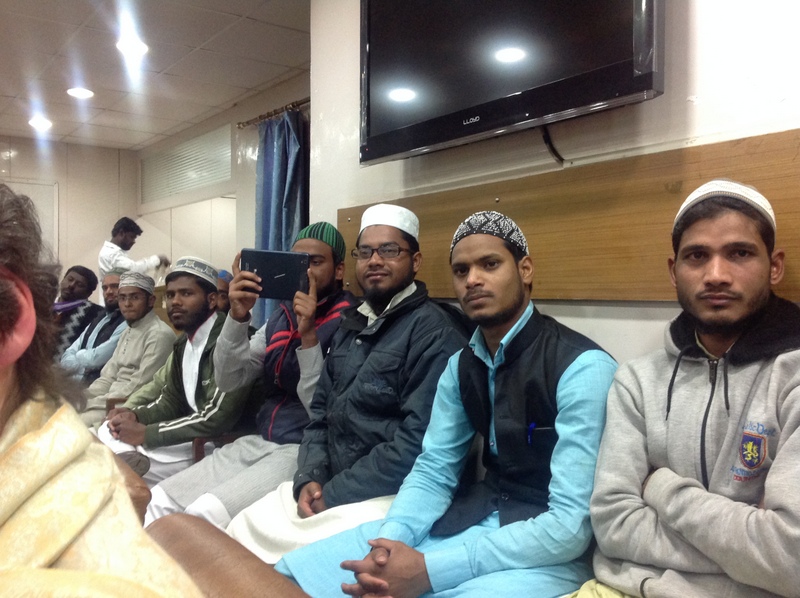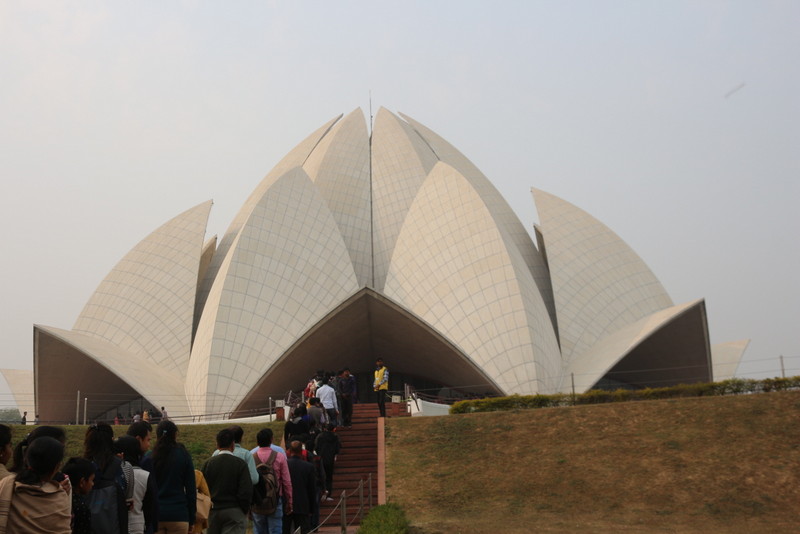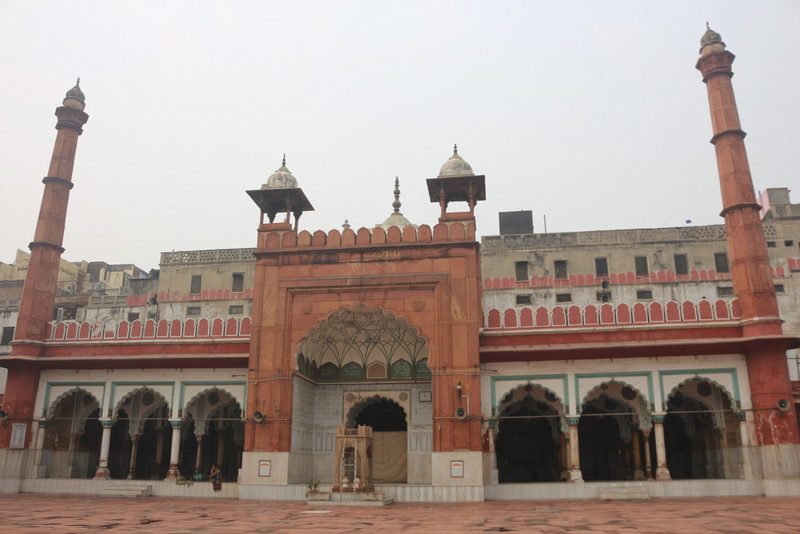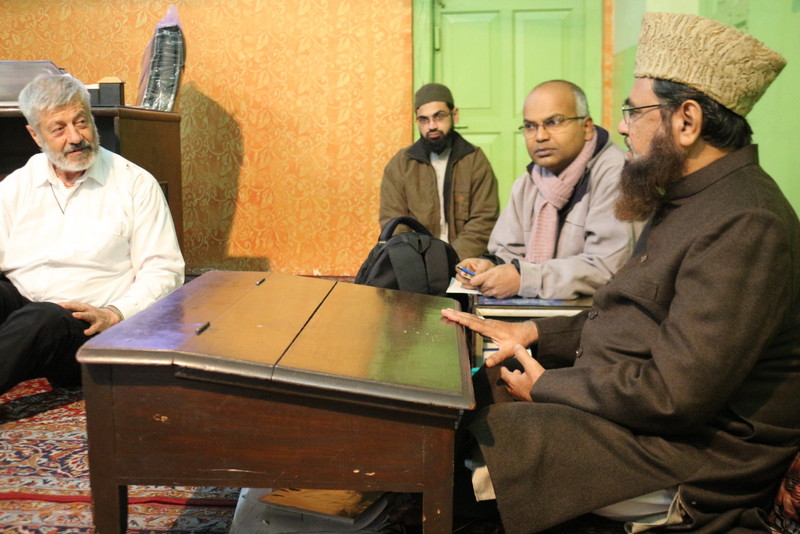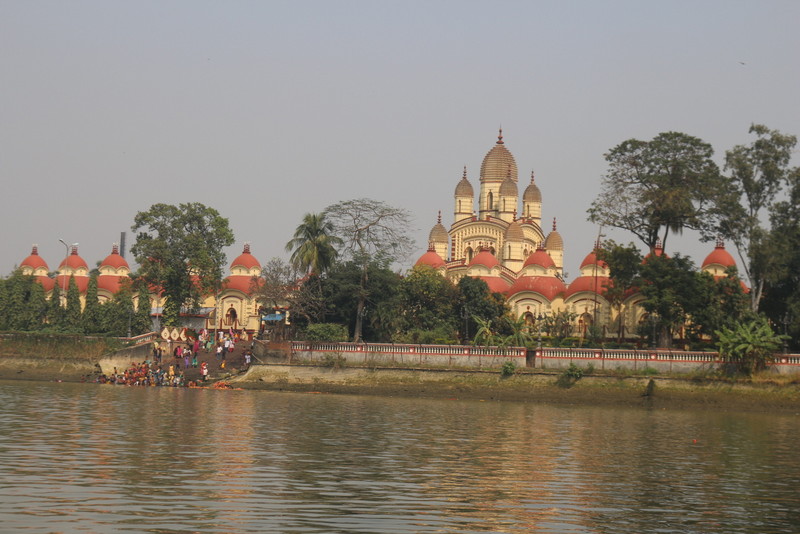

Latest News
Interfaith Pilgrimage to India: MELA Interfaith Association
The MELA Interfaith Association organized a multifaith pilgrimage to India from Saturday 6 February to Friday 19 February 2016 with the purpose of visiting religious sites that are sacred to Islam, Hinduism, Buddhism and Christianity, to study texts from our sacred writings, to discuss points of agreement and disagreement, and so sense the religious experience that is proper to these faiths. The major locations visited were Delhi, Varanasi, Bodh Gaya and Kolkata.
In Delhi, participants were privileged to meet Mufti Mukarram Ahmad, Imam of the Fatehpuri Masjid who spoke about Islam. Maulana Wahiduddin Khan spoke of his work for peace through the Centre for Peace and Spirituality, which he founded.
Group shot with Maulana Wahiduddin Khan Saab, the Islamic scholar and peace activist who has won more peace awards than you can hang on a wall, he was very peace although forth right is his convictions of peace and the role Interfaith has to play and how we have to be active in this role. He has translated the Quran in simple and contemporary English and his brother has written children’s books from Islamic passages of peace. He had 3 of his grant daughters speak on their role of peace activism .
The Interfaith Coalition hosted the group at a conference and dinner for Peace and representatives of the Henry Martyn Institute and also met with Mr. Tejinder Singh at the Guru Tegh Bahadur Gurdwara who explained the Sikh faith.
Interfaith Coalition for Peace New Delhi
Really lovely young Sufi scholars listening during our discussions at the Interfaith Coalition for Peace meeting in New Delhi. We had a delicious banquet in the garden with the 50 people at the meeting, it was a very special evening getting to hear their points of view on peace, faith and global issues from Indian perspective.
The visit also included the Lotus Temple of the Baha’i’ faith.
Baha’i house of Worship, also known as the Lotus Temple built in 1986 in New Delhi. All faiths are welcome to prayer here.
The group met with Fr Felix Jones and his colleagues at the Dialogue Centre, and also met Most Rev. Anil J.T. Couto, the Archbishop of Delhi.
At Humayun's Tomb [Humayun was a Mughal Emperor], at the Keenaram Temple, at the Mahabodhi Temple, at Belur Math, and at many other places during this pilgrimage, the group explored some of the major texts of these faiths, trying to enter into their truth and holiness.
Fatehpuri Masjid Mosque is a 19th century mosque in one of the oldest areas of Old Dehli, Chandni Chowk, from the cacophony of sounds and squish of people, rickshaws and cows you enter under the arch to a pool of peace and sanctuary, just a light mist of rain – so tranquil.
Father John asks a question of Mufti Mukarram Ahmad the Chief Mufti of Fetehpuri Masjid Mosque Old Dehli
In Varanasi, the group walked through the winding streets of the ancient city, and spoke at length with one of the dombis at Harischandra Ghat. The group also met with Rakesh Pandey, a renowned yoga teacher, and with Dr Bettina Sharada Bäumer, a noted scholar of Kashmir Shaivism. A visit to Sarnath was included in the tour where the Buddha gave his first sermon.
The great variety of religious experiences during this journey enabled the group to appreciate the rich beauty of India’s differences.
In Bodh Gaya large groups of Japanese, Chinese, pilgrims from Tibet and Mongolia, Sri Lanka and Vietnam were also on tour. The group joined them as they meditated under the Bodhi tree, where, according to tradition, the Buddha attained enlightenment.
The last city on the tour was Kolkata, the site of Mother Teresa’s universal charity. This was a crucial part of the pilgrimage, because the grou did not come to India only as pilgrims, but also to serve. For this reason they spent some time helping out in Nirmal Hriday, Kalighat, the hospice for the sick, the poor and prostitutes founded by Blessed Mother Teresa.
The Dakshineshwar Kali Temple on the banks of the Hooghly River, a tributary of the Ghanges flowing through Kolkata, the presiding deity of the temple is Bhavatarini, an aspect of Kali, meaning, 'She who liberates Her devotees from the ocean of existence’ – don’t you love that?
The group also visited Asha Niketan, the L'Arche community, home to people of different abilities and disabilities, was the climax. It gave the group the understanding that serving others, regardless of creed or race, leads to intense joy and peace, which all religions seek.
The acceptance of all this diversity helped us understand each other more clearly. It helped us perceive the depths of God more deeply.
Report by: Rev Fr John Dupuche
-
Nostra Aetate in our times - An invitation to encounter: Notre Dame de Sion
(October 19, 2025 14:00)
-
Conferment of Guruship to Guru Granth Sahib | Sikhism
(October 20, 2025)
-
Diwali | Hinduism
(October 21, 2025)
-
Bandi Chhor Divas (Diwali) | Sikhism
(October 21, 2025)
-
Mahavir Nirvana | Jainism
(October 21, 2025)
-
Birth of the Bab | Baha'i
(October 22, 2025)
-
Birth of Baha'ullah | Baha'i
(October 23, 2025)
-
All Saints Day (Christianity)
(November 01, 2025)
-
Birth of Guru Nanak Dev Sahib Ji (Sikhism)
(November 05, 2025)
-
The Launch of Gesher 2025: The Council of Christians and Jews Vic (Inc)
(November 12, 2025 15:00)
-
Martyrdom of Guru Tegh Bahadur Ji (Sikhism)
(November 24, 2025)
-
Day of the Covenant | Baha'i
(November 25, 2025)
-
Ascension of Baha'ullah | Baha'i
(November 27, 2025)
-
Advent (Christianity)
(November 30, 2025 16:54)
-
Bodhi Day (Buddhism)
(December 08, 2025)
-
Hanukkah | Judaism
(December 15, 2025 17:48)
-
Christmas (Christianity)
(December 25, 2025)
-
Mahayana New Year | Buddhism
(January 03, 2026)
-
Birthday of Guru Gobind Singh Ji | Sikhism
(January 05, 2026)
-
Epiphany | Christianity
(January 06, 2026)
-
Nativity | Orthodox Christianity
(January 07, 2026)
-
Maghi | Sikhism
(January 13, 2026)
-
Pongal | Hinduism
(January 14, 2026 00:00)
-
Lailat al Miraj | Islam
(January 16, 2026)
-
Feast of Epiphany | Orthodox Christianity
(January 19, 2026)
-
Lailat al Bara'ah | Islam
(February 03, 2026)
-
Losar/Tibetan New Year | Buddhism
(February 10, 2026)
-
MahaShivaratri | Hinduism
(February 15, 2026)
-
Nirvana Day (Buddhism)
(February 15, 2026)
-
Ramadan | Islam
(February 17, 2026 00:00)
-
Lent begins | Christianity
(February 18, 2026 17:01)
-
Great Lent | Orthodox Christianity
(February 23, 2026 16:59)
-
Purim | Judaism
(March 03, 2026)
-
Magha Puja Day | Buddhism
(March 03, 2026)
-
Holi | Hinduism
(March 03, 2026)
-
Hola Mohalla | Sikhism
(March 04, 2026 18:05)
-
Lailat al Qadr | Islam
(March 16, 2026)
-
Eid ul Fitr | Islam
(March 20, 2026)
-
Naw Ruz | Baha'i
(March 21, 2026)
-
Annunciation (Christianity)
(March 25, 2026)
-
Rama Navami | Hinduism
(March 26, 2026)
-
Holy Week | Christianity
(March 29, 2026 00:00)
-
Mahavir Jayanti | Jainism
(March 31, 2026)
-
Theravada New Year | Buddhism
(April 02, 2026 00:00)
-
Pesach | Judaism
(April 02, 2026 00:00)


